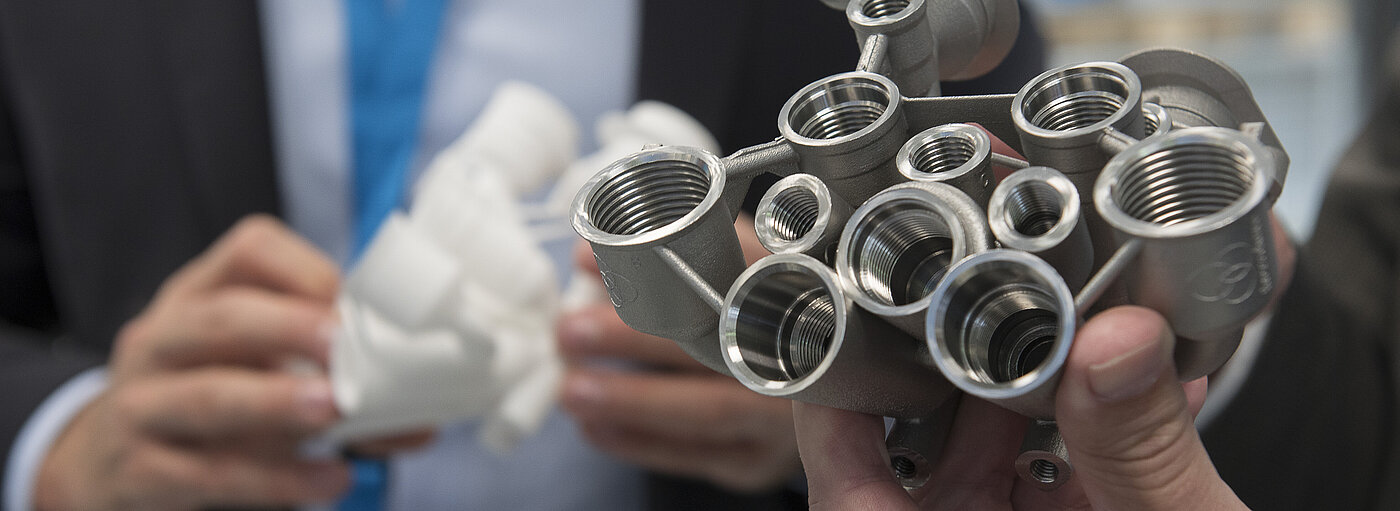Mrs. Bischof, what has been your most unusual printing job to date? And what material is most difficult to process in 3D printing?
The most rewarding printing orders typically come from research and development and are therefore unfortunately top secret.
But in general it can be said that metal printing, for example, enables pretty impressive components featuring internal channels and bionic honeycomb structures.
My most unusual order to date was to 3D-print meerkats for use as trophies in a health and safety competition. This had absolutely nothing to do with technical components for a change.
Of course, each material behaves differently in a 3D-printing process and has its own strengths and weaknesses. That's what makes this technology so interesting. Without wanting to discriminate against any particular group of materials, working with nickel-based materials is a great way to challenge yourself a little bit.
3D printing versus additive manufacturing: Is there a difference between the two?
The term "3D-printing" has become pretty familiar to the general public, that is obvious when I speak with friends, for example.
When you say "additive manufacturing" however, you often get bewildered looks although the term basically denotes the same group of manufacturing technologies.
What are the great benefits of this approach compared to traditional manufacturing techniques? For example, can it be used to print spare parts on board?
The greatest advantage is the enormous geometric freedom this technology enables. It opens up entirely new design options and ways to realise ideas that cannot be implemented with other methods. At the same time, one particular printer can be used to make entirely different components, provided you have sufficient material available.
This is why the technology is very attractive for making spare parts locally. 3D-printing spare parts on board would, of course, be the ultimate in additive manufacturing. In fact, thyssenkrupp Marine Systems has trialled this on its company ship "Hercules".
What is different about 3D-printing components for naval ships?
Compared to many other segments, naval shipbuilding is subject to especially strict specifications. In this field, the material properties and the entire remainder of the process chain must undergo intense scrutiny before a component is considered failsafe and allowed to go on board. In terms of certification of 3D-printed components, thyssenkrupp Marine Systems is considered as a pioneer, a fact that is partially owed to the world's first-ever DNV GL-issued manufacturer approval for additive-manufactured components in the maritime industry. Many colleagues are actively driving this development. Nevertheless, we do occasionally stumble over official norms and standards that are well established for conventional components but do not address additive manufacturing.
Furthermore, it should be noted that naval shipbuilding often comes with extremely complex challenges where many components involve an entire team of experts from a wide range of disciplines.



